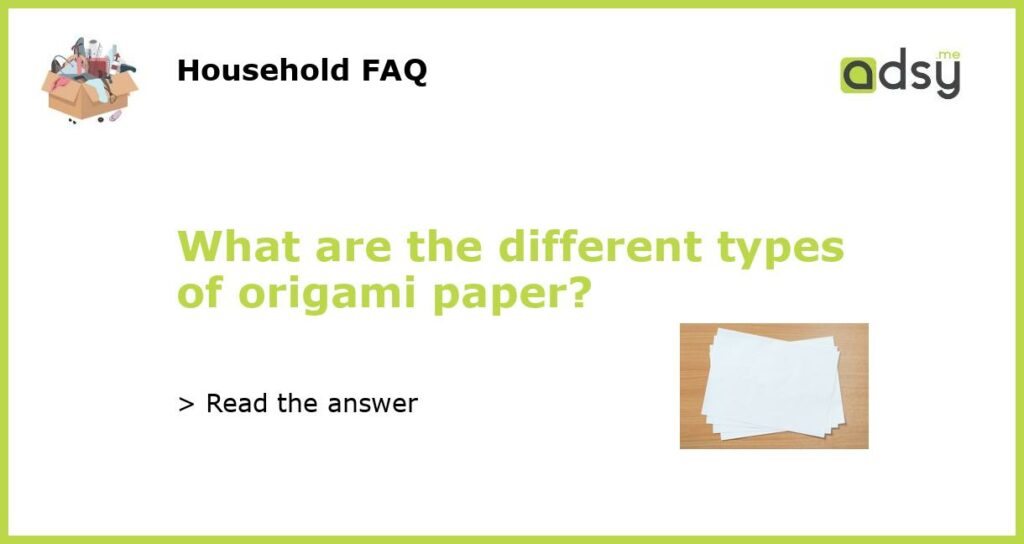The Different Types of Origami Paper
If you’re interested in the Japanese art of origami, one of the first things you’ll need is origami paper. Origami paper comes in various types, each with its own unique features and qualities. In this article, we’ll explore some of the different types of origami paper available, so you can find the right one for your projects.
Traditional Origami Paper
The most commonly used origami paper is the traditional origami paper, also known as kami. This type of paper is usually square-shaped and comes in a variety of vibrant colors. It is thin, lightweight, and easy to fold, making it perfect for beginners and simple models. Traditional origami paper is widely available in craft stores and online.
Traditional origami paper is typically single-sided, with one side colored and the other side white. One of the advantages of using traditional origami paper is that it holds a crease well, making it easier to create crisp and clean folds. It is also relatively affordable, making it an ideal choice for practicing and experimenting with different folding techniques.
Washi Origami Paper
Washi is a type of traditional Japanese paper made by hand using traditional methods. It is known for its strength, durability, and exquisite look. Washi origami paper is usually made from the bark of the gampi tree, the mitsumata shrub, or mulberry bush fibers. The traditional process of making washi involves pounding and drying the fibers, resulting in a unique texture and appearance.
Washi origami paper is often more expensive than regular origami paper due to the labor-intensive production process and the high-quality materials used. However, it offers a distinct feel and adds a touch of elegance to origami models. Washi paper is often used for complex and intricate designs that require precise folding and shaping.
Foil Origami Paper
Foil origami paper is a type of origami paper that features a metallic or glossy finish. It is made by bonding a thin layer of metallic foil onto regular origami paper. The metallic surface reflects light, adding a visually striking element to origami models. Foil origami paper is available in various colors and patterns, allowing for unique and eye-catching creations.
One of the challenges of using foil origami paper is that it is more difficult to fold compared to traditional or washi paper. The metallic foil layer tends to crack and peel if excessive pressure is applied during folding. However, with practice and patience, it is possible to create stunning origami models using foil paper. Foil origami paper can be found in specialty craft stores and online retailers.
Tissue Foil Origami Paper
Tissue foil origami paper is a unique type of paper that combines the properties of tissue paper and foil. It consists of a layer of tissue paper bonded to a thin sheet of aluminum foil. The tissue layer adds texture and pliability, while the foil layer provides structural support and a shiny appearance.
Tissue foil origami paper is more durable and easier to fold than regular foil origami paper. It can be shaped and manipulated to create intricate details and complex origami models. Tissue foil origami paper is commonly used by experienced origami artists who want to achieve a balance between malleability and strength in their creations. It can be purchased online or made at home by adhering tissue paper to aluminum foil.






